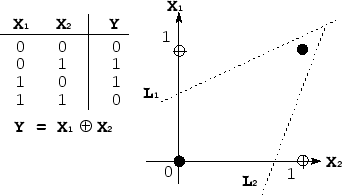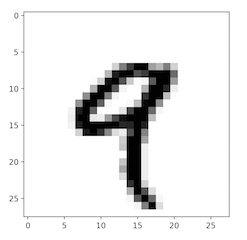Keras
experiments with the Keras #DeepLearning library for Python
Introduction
This is a whirlwind post that is meant to provide:
- pointers to basic environment setup
- quick ramp on neural nets using the XOR problem
- simple training for the MNIST digit recognition task
- samples involving OpenAI’s Gym environment for reinforcement learning tasks
It is not intended to provide:
- background on neural networks, deep learning, or underlying mathematics
- network architectures and hyperparameter tuning
- deep exploration of libraries, APIs, object models, and tuning
Links are provided to source blog posts that go into more detail on each of these examples (including some of the underlying theory/math/background).
Our future posts will build on this basic foundation as we tackle more realistic problems using Keras.
Prerequisites and Setup
Sample Code
Sample code is maintained in the keras repo
Abstractions
The primary benefit of Keras is that it abstracts the various backends, such as TensorFlow, Theano, and CNTK. It provides a “user friendly” API for dealing with deep neural network architectures commonly found in today’s CNNs and RNNs.
Data Abstractions
Data in deep learning is represented as tensors of various dimensions, e.g., 0D (scalar), 1D (vectors), 2D (matrices), nD (tensors).
They also have a shape that indicates how to interpret the collection of data elements, i.e., how many dimensions the tensor has along each axis. For example, to express 3 4x4 matrices has a shape of (3,4,4).
The elements also have a primitive data type, such as uint8 or float32.
Data Operations
Tensors are manipulated via operations, such as computing dot-products, matrix multiplication, or reshaping.
TensorFlow Backend and GPUs
We will focus on using TensorFlow as the preferred backend, taking advantage of the local machine’s GPUs, if any. To test this setup, from within your configured environment (see above):
source activate keras
cd keras/gpu-test
python main.py
This code runs a simply Python script that prints its device configuration:
from tensorflow.python.client import device_lib
print(device_lib.list_local_devices())
On my MacBook Pro, I get:
name: "/device:CPU:0"
device_type: "CPU"
memory_limit: 268435456
While on my Linux desktop with two GeForce GTX 1080 Ti GPUs , I get:
name: "/device:CPU:0"
device_type: "CPU"
memory_limit: 268435456
name: "/device:GPU:0"
device_type: "GPU"
memory_limit: 10921259828
physical_device_desc: "device: 0, name: GeForce GTX 1080 Ti, pci bus id: 0000:17:00.0, compute capability: 6.1"
name: "/device:GPU:1"
device_type: "GPU"
memory_limit: 10672223028
physical_device_desc: "device: 1, name: GeForce GTX 1080 Ti, pci bus id: 0000:65:00.0, compute capability: 6.1"
XOR
A classic non-linear problem that motivates the multi-layer perceptron is the simple logical exclusive-OR (XOR), which is true when the one of the two inputs is true (but not both):

http://www.ece.utep.edu/research/webfuzzy/docs/kk-thesis/kk-thesis-html/node19.html
With NumPy
There is a nice implementation of this using nothing more than numpy described in A Neural Network in 11 lines of Python (Part 1), which reduces to:
X = np.array([ [0,0,1],[0,1,1],[1,0,1],[1,1,1] ])
y = np.array([[0,1,1,0]]).T
syn0 = 2*np.random.random((3,4)) - 1
syn1 = 2*np.random.random((4,1)) - 1
for j in xrange(60000):
l1 = 1/(1+np.exp(-(np.dot(X,syn0))))
l2 = 1/(1+np.exp(-(np.dot(l1,syn1))))
l2_delta = (y - l2)*(l2*(1-l2))
l1_delta = l2_delta.dot(syn1.T) * (l1 * (1-l1))
syn1 += l1.T.dot(l2_delta)
syn0 += X.T.dot(l1_delta)
(We have used a slightly different implementation in our sample.)
To run:
source activate keras
cd keras/xor-numpy
python main.py
With Keras
This simple model can be translated into Keras following Understanding XOR with Keras and TensorFlow:
import numpy as np
from keras.models import Sequential
from keras.layers.core import Dense
# the four different states of the XOR gate
training_data = np.array([[0, 0], [0, 1], [1, 0], [1, 1]], "float32")
# the four expected results in the same order
target_data = np.array([[0], [1], [1], [0]], "float32")
model = Sequential()
model.add(Dense(16, input_dim=2, activation='relu'))
model.add(Dense(1, activation='sigmoid'))
model.compile(loss='mean_squared_error',
optimizer='adam',
metrics=['binary_accuracy'])
model.fit(training_data, target_data, epochs=500, verbose=2)
print("prediction: {}".format(model.predict(training_data).round()))
To run this example:
source activate keras
cd keras/xor-keras
python main.py
MNIST
Another classic problem used determine the worhtiness of a machine learning algorithm is recognizing handwritten digits, known as MNIST.
Keras has built-in support for this dataset, so makes working with it quite easy.
Matplotlib
It is often useful to visualize various aspects of the problem during solution development or processing. A common Python library is matplotlib. In this sample, we simply load the MNIST training data and render one of the samples:
from keras.datasets import mnist
import matplotlib.pyplot as plt
(train_images, train_labels), (test_images, test_labels) = mnist.load_data()
print("training data = dims: {}, shape: {}, dtype: {}".format(
train_images.ndim, train_images.shape, train_images.dtype))
digit = train_images[4]
plt.imshow(digit, cmap=plt.cm.binary)
plt.show()
To run:
source activate keras
cd mnist_plt
python main.py
A successful run of the matplotlib should produce a rendering like:

Classifying Digits
The seoncd MNIST sample has been slightly modified from MNIST Handwritten digits classification using Keras to train a model that is capable recognizing hand-written digits.
To run:
source activate keras
cd mnist
python main.py
The full training run will produce a JSON-based model file and console output indicating the accuracy:
Test loss: 0.02734791577121632
Test accuracy: 0.9917
OpenAI Gym
From the website:
OpenAI Gym is a toolkit for developing and comparing reinvorcement learning algorithms.
To get started with this example (gym-simple), import the packages:
import gym
import gym.spaces
Environments
The core abstraction of Gym is that of an environment that can be used to solve reinforcement learning problems. These include pendulum experiments (CartPole-v0), video games (MsPacman-v0), etc.
Installed environments can be listed:
from gym import envs
print("Environments: {}".format(envs.registry.all()))
Observations
An observation is an environment-specific object representing what your agent perceives of the environment, such as raw pixel values, joint angles and velocities, etc.
Actions
After reflecting on an observation and deciding what to do, your agent performs an action in the environment during a step, which produces a new observation along with a reward.
Spaces
Every environment includes an observation space and an action space, which describe their valid formats.
# load an environment
env = gym.make('CartPole-v0')
print("Action space: {}".format(env.action_space))
print("Observation space: {}".format(env.observation_space))
To run:
source activate keras
cd keras/gym-simple
python main.py
After the catalog of environments, you should see the output of the space definitions:
Action space: Discrete(2)
Observation space: Box(4,)
And an animation of something resembling:

Conclusion
This was mainly a dip of the toe into these rich topics. We’ll be digging into more of the details as we attempt to actually constrct deep nets to solve some more interesting problems.
License
MIT © 2018 Donald Thompson